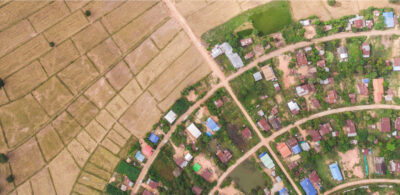The wait is over: Victoria implements the new windfall gains tax regime
14 October 2021
On 12 October 2021, the Victorian Government introduced the Windfall Gains Tax and State Taxation and Other Acts Further Amendment Bill 2021 (Bill).
The Bill implements the state’s new windfall gains tax regime, build-to-rent (BTR) land tax and absentee owner surcharge concessions, which were announced in the 2021-22 and the 2020-21 State Budgets respectively.
Despite some positive, and not-so-positive, aspects of the Bill – after a long period of uncertainty for the property sector, visibility over the details of the proposed windfall gains tax regime and eligibility criteria for Victoria’s BTR land tax concessions are certainly welcomed.
How the windfall gains tax regime and the BTR land tax concessions will operate is set out below.
Windfall gains tax
Pushing back the commencement date of the windfall gains tax by a year to 1 July 2023, the Bill provides that windfalls associated with the rezoning of land from one zone type to another will be subject to a new tax at the following rates:
Taxable value uplift | Tax payable |
$0 – $99,999 | $0 |
$100,000 to $499,999 | 62.5% of the uplift above $100,000 |
$500,000 and over | 50% of the total uplift |
A liability will arise when a ‘WGT event’ occurs, being when a land rezoning takes effect under the Planning and Environment Act 1987 (Vic). The tax liability will rest with the owner of the land at the time the WGT event occurs.
Windfall gains tax liability will be assessed against the ‘aggregated taxable value uplift’ of all the land owned by the taxpayer that is rezoned by a WGT event. The uplift amount will be the difference between the pre-rezoning value and the post-rezoning value of the affected land, and the Bill provides that such calculations will be made on a ‘capital improved value’ basis (and not on a ‘site value’ basis).
Payment of up to 100% of the windfall gains tax may be deferred until the earlier of a dutiable dealing in respect of the land or the landholder (other than certain excluded transactions), or 30 years. Interest will accrue against deferred amounts at a rate defined with reference to the 10-year yield on Treasury Corporation of Victoria bonds. To seek a payment deferral, an election must be made to the Commissioner prior to the date on which the windfall gains tax would have otherwise been payable.
Unpaid windfall gains tax, together with any accrued interest and penalties will be a first charge on the land with priority over all other encumbrances to which the land is subject.
The Bill also specifically provides:
- Land subject to multiple occupancies: Where a single parcel is subject to multiple occupancies, the Commissioner may assess windfall gains tax liability with reference to a valuation which determines the value of each occupancy;
- Jointly held land: Joint owners of land are generally to be jointly assessed as if the land was owned by a single person;
- Land held on trust: If the affected land is held on trust, the trustee is to be assessed for windfall gains tax on the aggregated taxable value uplift of all the land that is subject to the trust. This is without regard to any land held by the trustee for the benefit of another trust or in the trustee’s personal capacity; and
- Assessments against members of a group: Members of related corporations and related trusts will be assessed for windfall gains tax on the aggregated taxable value uplift of all the land owned by members of the group that is rezoned by a WGT event. Each member of the group will be jointly and severally liable to pay the windfall gains tax assessed in relation to the group.
A number of exemptions from windfall gains tax will be available. This includes:
- Growth Areas Infrastructure Contribution areas: A rezoning that causes land to be brought into the Growth Area Infrastructure Contribution areas will be excluded from windfall gains tax;
- Land rezoned to a Public Land Zone: Properties that are rezoned to a Public Land Zone will be excluded from the windfall gains tax;
- Land previously zoned as residential land with a dwelling fit for occupancy: If prior to rezoning the land was residentially zoned land, and it was occupied by a dwelling fit for occupation, the landowner will be exempt from windfall gains tax. However this exemption will only apply to up to the first two hectares of land that are subject to a WGT event. This exemption will apply regardless of whether the dwelling was the landowner’s principal place of residence;
- Land rezoned to rural land: Windfall gains tax liability will not arise where land is rezoned to the Rural Zone (other than the Rural Living Zone);
- Land owned by charities: Windfall gains tax liability will not be incurred with respect of ‘charitable land’ (being land that is owned by a charity and that is used and occupied by a charity exclusively for charitable purposes). This is so long as the land continues to be used for charitable purposes for a 15 year period following the rezoning event; and
- Transitional relief: Liability to windfall gains tax will not arise where the land is subject to a contract of sale or an option to enter into a contract of sale that was entered into (or granted in the case of an option) before 15 May 2021, and that had not been completed by the transfer of the land before the WGT event occurred. Additionally, liability will not arise where, as at 15 May 2021, the affected land was subject to a planning scheme amendment that had obtained a tracking number or where the Minister of Planning had agreed to prepare the rezoning – provided significant costs have been incurred by the landowner to support the amendment (being the lesser of $100,000 or 1% of the capital improved value of the land immediately before the WGT event).
Build-to-rent concessions
From the land tax year commencing 1 January 2022, land (or part of land) that is used solely for eligible build-to-rent purposes will attract a 50% land tax discount, together with a full exemption from the absentee owner surcharge.
Representing a notable extension to what was announced in the 2020-21 State Budget, the Bill provides relief for a period of 30 years from when the land (or part of the land, as the case may be) is first occupied for an eligible build-to-rent purpose. This is in contrast to the previous announcement to provide relief through to 1 January 2040. However, relief will only apply where the land is first suitable for occupation for build-to-rent purposes between 1 January 2021 and 31 December 2032.
Specifically, the land tax concession and absentee owner surcharge exemption will only apply to ‘BTR developments’, which the Bill defines to mean one or more buildings that are constructed, or substantially renovated, for the purpose of providing at least 50 self-contained dwellings for lease under residential rental arrangements. The lessor must offer a fixed rental term of at least three years (however a renter may elect to enter into a shorter term). It is also a requirement that these dwellings be fixed to the same parcel of land, that they be owned by one owner or owned collectively, and that the dwellings be managed by a single management entity (other than affordable housing or social housing).
Additionally, to attract relief, the land (or part of the land, as the case may be) must be intended to be used solely for eligible build-to-rent purposes for a continuous period of 15 years from the initial occupancy date of the eligible BTR development.
A BTR special land tax may apply if the 15-year use requirement is not satisfied. The special land tax is in effect a clawback of the BTR benefits received in respect of the land, plus interest.
Final comments
The windfall gains tax is a new state tax and will bring layers of complexity to Victorian property transactions. Vendors are no stranger to thinking about federal taxes like CGT and GST on a sale of property, but will now also need to be thinking about the potential impact of state taxes going forward – both in the direct application of the windfall gains tax, and also to ensure that dutiable events (generally on the minds of a purchaser or acquirer) do not inadvertently trigger an obligation to pay a deferred windfall gains tax liability.
For the build-to-rent sector, the Bill provides much needed clarity around the eligibility criteria for concessions, in addition to a notable extension in tax relief.
Authors

Partner

Senior Associate
Tags
This publication is introductory in nature. Its content is current at the date of publication. It does not constitute legal advice and should not be relied upon as such. You should always obtain legal advice based on your specific circumstances before taking any action relating to matters covered by this publication. Some information may have been obtained from external sources, and we cannot guarantee the accuracy or currency of any such information.
Key Contact
Other Contacts
Head of Real Estate (Acting)



